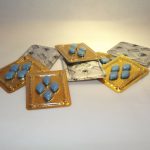New research suggests that some of the additives that extend the shelf life and improve the texture of processed foods may have harsh side effects on the human gut microbiome. The rise in deadly cases of a terrible gut infection caused by Clostridium difficile is the outcome of adding the sugar trehalose to almost all of our processed food.
Processed foods are often packed with sugar, fat and salt, and they tend to lack fiber and vitamines. Unfortunately, additives may selectively feed the more dangerous members of our microbial communities. These bacteria tend to strike right after taking antibiotics, during chemotherapy or any other process that weakens our immunosystem. Yearly, almost half a million people develop an infection caused by Clostridium difficile (C. diff) and around 29,000 die as a result of bloody diarrhea. Alarmingly, deaths linked to C. diff increased five-fold between 1999 and 2007.
The bug evolved antibiotic resistance throughout the years and has become more virulent and not as easily treatable. Furthermore, Robert Britton, a microbiologist at Baylor College of Medicine, discovered more virulent strains of C. diff were outcompeting other, less virulent strains in the gut.
Dr. Britton and his team combed through over 200 sugars and amino acids present in the gut to see if these microbes better utilized some food source than others. According to a new study published in the journal Nature, two of the most problematic C. diff strains, capable of causing diarrhea, colitis, organ failure, and death, have a unique ability to utilize a sugar called trehalose.
“An important contribution of this study is the realization that what we once considered a perfectly safe sugar for human consumption, can have unexpected consequences,” Robert Britton said for EurekAlert.
Trehalose occurs naturally in mushrooms, yeast and shellfish, and works great for stabilizing processed foods. It keeps them moist on the shelf and improves texture. Since about 2001, it has been added to everything from cookies to ground beef. Consequently, we have unintentionally cultivated the most toxic strains of C. diff.
“In the 1980s they were not epidemic or hypervirulent but after the year 2000 they began to predominate and cause major outbreaks,” said Britton. “In 2000, trehalose was approved as a food additive in the United States for a number of foods from sushi and vegetables to ice cream.”
To connect the ability to metabolize low levels of trehalose with increased disease severity, the researchers worked with a mouse model of C. diff infection.
“Mice received a strain of the RT027 lineage of C. difficile and a diet with or without low trehalose levels,” said first author Dr. James Collins, a postdoctoral associate in the Britton lab. “What the mice ate made a difference to the virulence of the infection; mortality was higher in the group consuming trehalose.”
Many artificial sweeteners like sucralose and saccharin, which we consume in diet sodas and “sugar-free” snacks, can be metabolized by the microbes inhabiting our colons. The important question is whether food additives are worse than the high-sugar, high-fat junk food diet. Maybe we should consider hospitals serving only unprocessed food since vulnerable patients more often get severe infections. The drugs being served to these patients are part of the problem too. They can contain thickeners, artificial sweeteners, and stabilizers.
“What this research shows is that people should be considering the ecological impacts of food stuffs,” Dr. Britton said for The NY Times. “Our gut bacteria are being bombarded with things that we never ate — or never ate in the concentrations we eat now.”
Learn more about Clostridium difficile in the video below:
By Andreja Gregoric, MSc











